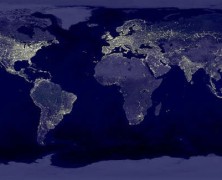Worldwide attention was recently centered upon LED technology when the Nobel Prize committee announced that three scientists were awarded the 2014 Nobel Prize in Physics for inventing the blue LED. While many people may have read the news and thought, “maybe it’s time to complete my energy efficient lighting retrofit,” less well-known are the benefits of LED lighting in developing countries. LEDs, combined with solar panels, have been a called a “transformative technology” for more than a billion people who live without a reliable source of electricity. Today, 5 percent of Africans without access to electricity, around 28.5 million people, are using renewable energy-powered LED lights to break through the dark night. That’s in addition to a growing market in South Asia as well. According to Russell Sturm from a private sector investment arm of the World Bank International Finance Corp, worldwide sales of solar-powered LEDs have been growing at a rate of 150% annually for several years. In the past six months alone, 2.1 million LED-solar products have been sold to people around the world who are unconnected to an electrical grid. The majority of the 1.3 billion people who are living without electricity rely on kerosene, wood and candles to produce light and home energy. The economic and environmental costs of these light-generating methods have been pointed to as major stumbling block to productivity and economic growth for the world’s poorest people. Kerosene in particular has been called out due to the fact that it’s relatively expensive and increases risk for fire and health damage. People around the world without electricity spend around $38 billion a year on kerosene. Recognizing the opportunity to disrupt the market, social entrepreneurs have taken to LED technology and are selling it to the world’s poorest people, allowing them to leapfrog...






